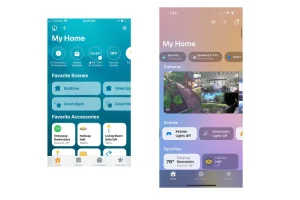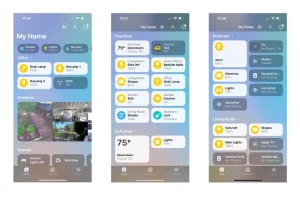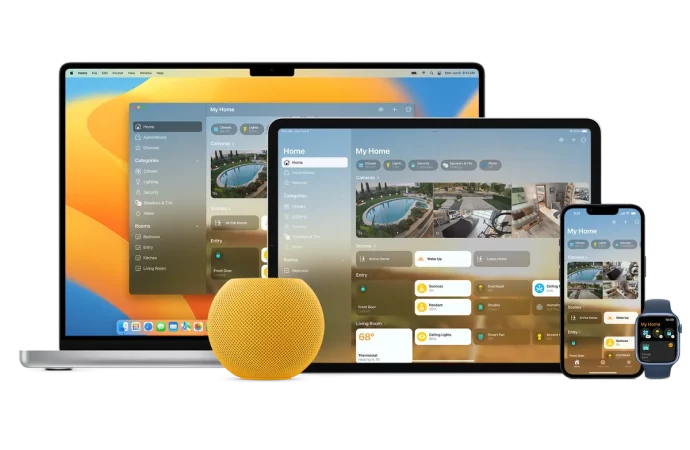Introduction Apple’s Home app has long been perceived as an afterthought in the world of smart home automation. When Apple initially introduced its HomeKit framework, it decided against creating a dedicated app for controlling smart home devices. It was only two years after HomeKit’s launch that Apple finally released the home app with iOS 10.
Introduction
Apple’s Home app has long been perceived as an afterthought in the world of smart home automation. When Apple initially introduced its HomeKit framework, it decided against creating a dedicated app for controlling smart home devices. It was only two years after HomeKit’s launch that Apple finally released the home app with iOS 10. Even then, the app saw minimal updates, leading many users to feel frustrated by the slow progress. However, with the upcoming release of iOS 16, Apple is unveiling a significant redesign of the Home app, indicating that it is finally taking its smart home project seriously.

Image by: https://www.theverge.com/
Aesthetically Pleasing Redesign
As a user who has been testing the new home app on an iPhone 13 since the iOS 16 public beta was released, it’s evident that the redesign focuses mainly on aesthetics. The new app boasts visually appealing icons, redesigned buttons, and even fresh wallpaper options. It epitomizes Apple’s signature aesthetic design – sleek, intuitive, and visually pleasing. This is a marked improvement from the old Home app, which lacked the finesse associated with Apple’s software design.
Motivated by Matter
One of the driving forces behind this extensive Home app redesign is the imminent launch of Matter – a new smart home standard developed collaboratively by Apple, Google, Amazon, Samsung SmartThings, and others. Matter is set to expand the number of devices compatible with HomeKit, addressing the current limitation of fewer than 1,000 HomeKit-compatible devices, significantly fewer than the more than 100,000 devices compatible with Amazon’s Alexa.
Enhancing Usability
The redesign doesn’t stop at appearances; it also addresses usability concerns. The new Home app has a more intuitive user interface, making it easier to navigate and control devices. Unlike the previous version that presented an overwhelming list of “Accessories” and “Favorites,” the redesigned app organizes devices into Rooms, allowing for quicker access. Moreover, a new Shortcuts section categorizes devices by type, further streamlining the user experience.

Image by: https://www.theverge.com/
Better Buttons
One of the most significant usability improvements comes in the form of better buttons (tiles). The redesign introduces a pop-up menu for buttons, offering more functions and icon options. Tapping the icon on the left side of the tile now turns the device on or off, while tapping the tile itself opens the device’s control panel. This change may take some getting used to, but it ultimately makes controlling devices more efficient.
A Happier Home View
The main homescreen also undergoes a complete overhaul. The Rooms tab has been replaced with Home, Automation, and Discover tabs. Users can now customize the Home View to display rooms, favorites, cameras, and scenes according to their preferences. This newfound freedom, inspired by Google Home’s app, empowers users to make their smart home experience more personalized.
Customization Options
The new home app allows for greater customization. Users can reorder sections, placing frequently used rooms and scenes at the top for easy access. Additionally, device icons within each room are now fully rearrangeable, giving users the freedom to organize their app like they do their iPhone’s home screen.
Remaining Limitations
Despite the positive changes, the home app still lacks some essential features that would make a HomeKit-powered home truly smart. Automations remain disorganized and limited in options. Users cannot set motion sensors to turn off lights after a set period of inactivity or ignore motion sensor automations when specific conditions are met, such as when an Apple TV is playing video. Additionally, there are no new functions or device categories introduced in iOS 16.
Looking Forward
The Home app’s redesign is undoubtedly a step in the right direction, but there’s room for further improvement. As Apple gears up for the launch of Matter, it should focus on resolving existing limitations in automations and introducing new device categories. Moreover, adding permissions for limited access to specific devices or rooms would enhance the user experience.
Conclusion
Apple’s newfound dedication to the home app and smart home technology is commendable. The redesigned home app, with its improved aesthetics, enhanced navigation, and customization options, sets the stage for a more enjoyable smart home experience. With Matter’s impending launch and the promise of increased device compatibility, Apple should seize the opportunity to address the remaining limitations and make the home app a truly indispensable smart home companion. While progress may have been slow in the past, the future looks promising for Apple’s smart home venture.

















Leave a Comment
Your email address will not be published. Required fields are marked with *